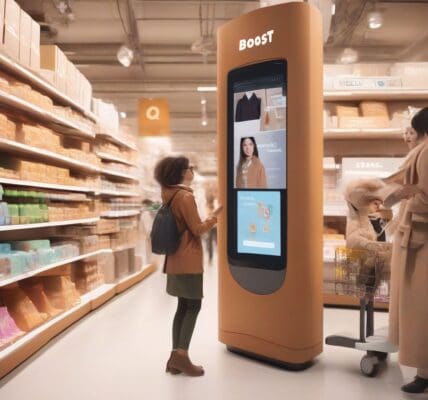The digital marketplace in the Netherlands has witnessed explosive growth, with recent statistics revealing that the country now hosts over 100,000 online stores. This number represents an increase in entrepreneurs capitalizing on e-commerce as a primary channel for sales. The latest quarterly report from Statistics Netherlands underscores this growth trajectory, marking a significant evolution in shopping behaviors and retail landscapes.
Official figures indicate that there are approximately 99,990 businesses operating primarily as online retailers. Although the actual number exceeds this, the report focuses specifically on those businesses where online sales constitute the core activity. This number has soared from just over 46,000 in 2019—a staggering rise that reflects a 115% increase in five years. The pandemic-driven shift towards online shopping has solidified e-commerce as a crucial component of the retail sector in the Netherlands, fundamentally altering consumer habits.
In a typical month, around 700 new online shops are launched, indicating a surge of interest and investment in this channel. For retailers, this presents both opportunities and challenges; while the number of competitors increases, so too does the potential customer base. Notably, the market for online retail has transitioned to a point where, as of last year, the Netherlands has more online stores than traditional brick-and-mortar establishments.
However, the e-commerce boom has not directly translated to rapid revenue growth. According to the Market Monitor from the e-commerce association Thuiswinkel.org, online sales grew by a modest 1%, suggesting that consumer spending habits have stabilized despite the rising number of entrants into the market. This trend highlights the need for online retailers to not only attract customers but also optimize their offerings to ensure higher conversion rates.
A closer look at product categories reveals that the fashion industry reigns supreme in the online sphere. The report indicates that 22,985, or 23%, of online stores in the Netherlands are focused on selling clothing. This category is followed by general assortment stores and home and garden retailers, comprising 20.3% and 18.3% of the total online stores, respectively. The versatility and demand for clothing brands online underscore a thriving sector ripe for innovation and effective marketing strategies.
Consider the case of local Dutch clothing brands that have successfully carved out a niche by leveraging social media platforms. By engaging directly with consumers through targeted ads and influencer partnerships, these businesses have not only captured significant market segments but have also created loyal customer bases. This approach has proven effective in a competitive market where visually appealing marketing and a robust online presence are paramount.
In contrast, traditional retailers face pressure to remain relevant in an increasingly digital-centric environment. Many have begun integrating online sales with their physical stores, employing strategies such as click-and-collect to enhance customer convenience. This hybrid model allows them to retain foot traffic while also capturing online sales, thus addressing changing consumer preferences.
Recognizing the different classifications, the Dutch Chamber of Commerce currently reports 109,323 companies in the internet retailing category. This discrepancy with Statistics Netherlands emphasizes the variations in how e-commerce businesses can be categorized. The former account includes those with secondary operations, demonstrating the complex landscape of e-commerce frameworks.
As the number of online stores continues to rise, businesses must implement precise and well-researched conversion rate optimization (CRO) strategies. An example of this would be A/B testing for different design layouts or call-to-action buttons on websites to identify which variations yield higher sales conversions. An online store could discover, through data-tracking analytics, that a simplified checkout process significantly increases sales, demonstrating the importance of experimental approaches in marketing.
Ultimately, while the growth of online stores in the Netherlands indicates a positive trajectory for e-commerce, it necessitates a proactive stance on the part of retailers to adapt to an increasingly competitive market. By focusing on customer experience, utilizing data to inform strategy, and continually innovating their offerings, they can effectively navigate the challenges posed by a saturated online marketplace.
As the landscape evolves, the businesses that prioritize strategic agility and customer-centric approaches will likely emerge as leaders in this bustling digital economy.












